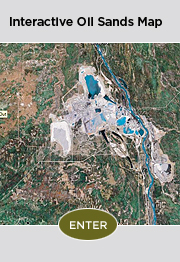U.S. Facts
OVERVIEW
- Canada is the largest supplier of oil to the U.S., providing nearly 2 million barrels a day – more than 20 per cent of U.S. imports. (Source: API)
- In 2010, Canada was the largest exporter of oil to the U.S., exporting almost double the volumes of each of the three next largest exporting countries: Mexico, Venezuela and Saudi Arabia. Canada exported almost 2 million b/d - about 21 per cent of total U.S. crude oil imports from foreign sources. Of this volume, 1.8 million b/d was sourced from Western Canada. Of that, just over 1 million b/d came from the oil sands. (Source: CAPP/NEB, 2011)
- Canadian oil reserves are the third largest in the world, behind only Saudi Arabia then Venezuela.
- Canada’s reserves contain 178 billion barrels and 97 per cent (over 170 billion barrels) are located in the oil sands.
ECONOMICS AND JOB CREATION
- Oil sands production could create an estimated 21,000 jobs in 2010 to 465,000 in 2035 in the United States.
- Modifications to pipelines and refineries to transport Canadian crude create jobs and bring tax revenue and additional economic benefits to the U.S.
- Oil sands demand for American companies’ goods and services could contribute $5.8 billion to the U.S. GDP in 2015 and up to $26.5 billion by 2025.
AIR
EMISSIONS
- The oil sands currently account for less than 0.1 per cent of total global greenhouse gas emissions.
- The oil sands industry has reduced its greenhouse gas emissions per barrel of oil by an average of 39 per cent since 1990, with some operations achieving reductions as high as 45 per cent.
- On a “wells-to-wheels” basis, life cycle emissions from oil sands crude are comparable to the average imported crude oil consumed in the United States.
AIR QUALITY
- Air quality around oil sands operations is better than all North American cities reviewed by the Alberta Clean Air Strategic Alliance.
- Air quality in the oil sands region is monitored around the clock. Results are available at www.wbea.org/content/view/56/1111.
- The province of Alberta has committed $2 billion toward carbon capture and storage (CCS). This is the largest CCS investment in the world and is the per capita equivalent of a $340-billion investment in the United States.
LAND
SURFACE DISTURBANCE
- Canada’s oil sands are found below the surface of 54,054 square miles of land, an area about the same size as the state of New York or North Carolina.
- The oil sands are located in the Canadian boreal forest. The Canadian boreal forest is as large as 88 per cent of the entire United States land area. Mineable oil sands exist under only 0.1 per cent of this total.
- More than 80 per cent of oil sands reserves will be developed using in-situ technologies (advanced drilling technologies). In-situ projects resemble conventional oil development and do not require tailings ponds or mine pits.
- While disturbance is occurring daily, in more than 40 years oil sands mining has disturbed about .02 per cent of the Canadian boreal forest – some 193 square miles, or a total land area approximately the size of the Kennedy Space Center in Florida.
LAND RECLAMATION
- As required by law, and included in all project approvals, all lands disturbed by oil sands operations must and will be reclaimed.
- Reclamation work is ongoing and continuous in the oil sands – to date, some 25 square miles of land has been reclaimed.
- Industry has planted more than 7.5 million tree seedlings towards reclamation efforts.
WATER
WATER USE
- More than 85 per cent of the water used by the oil sands mining is recycled and water withdrawals are strictly controlled and capped during low-flow periods.
- Today, oil sands mining projects use less than one per cent of the water that flows in the Athabasca River (the only major river near to oil sands operations).
- Water use is projected to grow to two per cent of the river’s flow if all the oil sands mining projects that are currently planned, go ahead.
- In-situ oil sands production primarily uses non-potable or saline groundwater water that is unsuitable for drinking, livestock or irrigation. Up to 95 per cent of this water is recycled.
WATER QUALITY
- Alberta Environment prohibits the release of any water into the Athabasca River that does not meet water quality requirements.
- Bitumen from exposed oil sands along the riverbanks seeps naturally into the Athabasca River as it cuts its way through the landscape.
- Water monitoring in the region is ongoing. The reports and complete dataset are available online at www.ramp-alberta.org.
TAILINGS PONDS
- Tailings contain the water, residual bitumen, sand and clay left over from when the bitumen is separated from the sand.
- During and after mining, the tailings ponds are reclaimed. No tailings water is released into the Athabasca River or any other watercourse.
- The first tailings pond was declared reclaimed in September, 2010.
- The Alberta Energy Resource and Conservation Board’s (ERCB) Directive 74, sets aggressive criteria for managing tailings, which will see all mining operations put into practice plans that eliminate growth in tailings ponds between 2012 and 2016. Companies will reduce tailings and provide target dates for pond closure and reclamation.




















